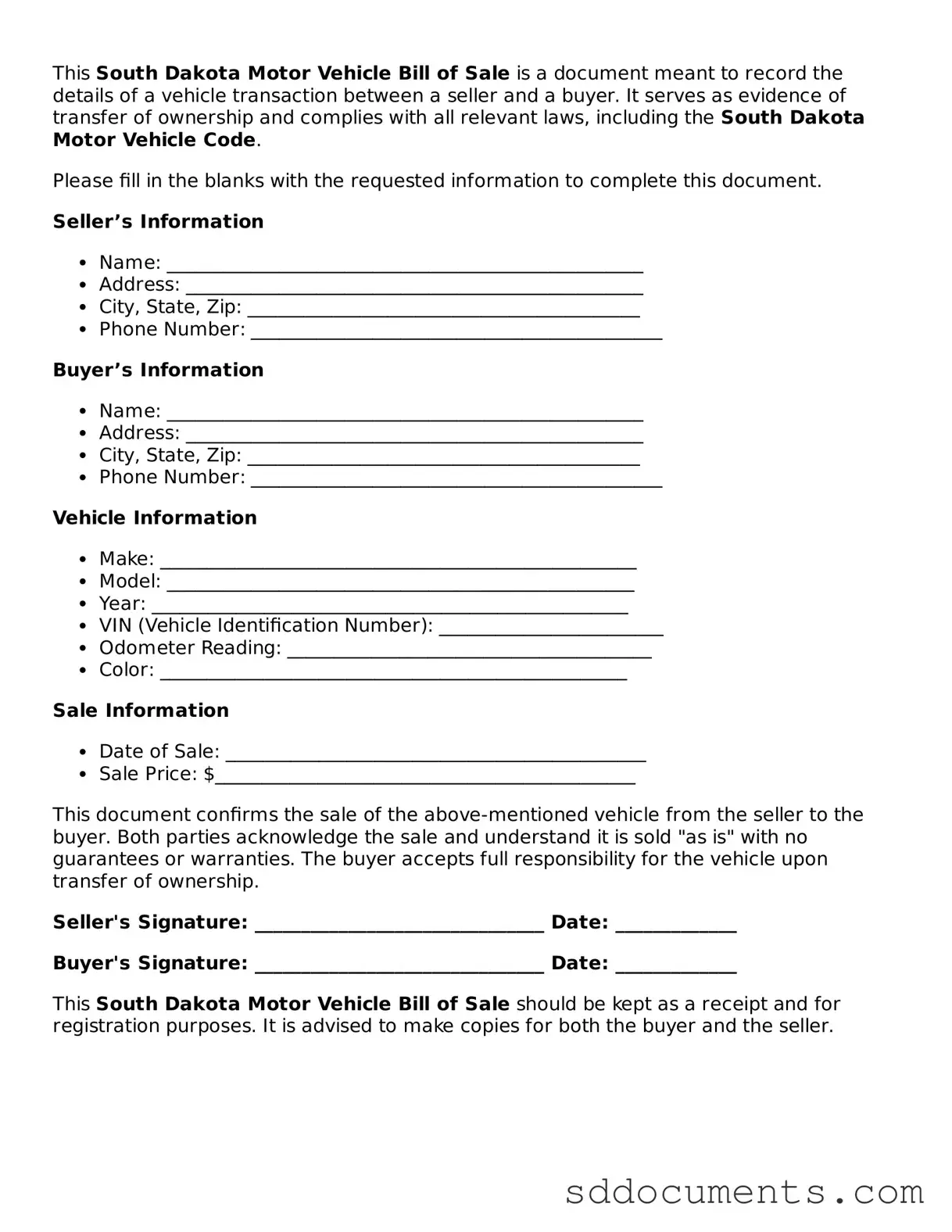Free Motor Vehicle Bill of Sale Template for South Dakota
The South Dakota Motor Vehicle Bill of Sale is a legal document that records the transfer of ownership of a vehicle from one party to another. This form is essential for both buyers and sellers to ensure a smooth transaction and to protect their interests. To get started, fill out the form by clicking the button below.
Customize Document Online
